The European corn borer (Ostrinia nubilalis) was introduced into the U.S. in 1917. Broken tassels, collapsed stalks, feeding signs on leaves, and borings in stalks and ears are signs of the presence of European corn borer larvae. The insect occurs in nearly all of the major corn-growing areas of the U.S.
Description
Full-grown larvae are 3/4 to 1" long and are flesh-colored with a brown head. Rows of light brown spots run the length of the body. The brown pupae are surrounded by a flimsy cocoon.
Adult moths have a wing span of about 1". Wings are usually folded over the body. Males have mosaic markings in bronze, yellow, and beige. Females have similar markings, but are slightly larger and paler than males.
The eggs can be found on the underside of corn leaves, along the midrib. They are laid in groups and look like fish scales. The color of the eggs changes over time, starting off a translucent light green and becoming darker when hatch is imminent.
Life Cycle
There are two generations of European corn borer per year in southern New Hampshire, but only one generation further north. This pest overwinters as a full-grown larva in corn stubble, corn refuse, and other plants. In spring, larvae pupate. Moths emerge from June to August, with a second generation occurring in August.
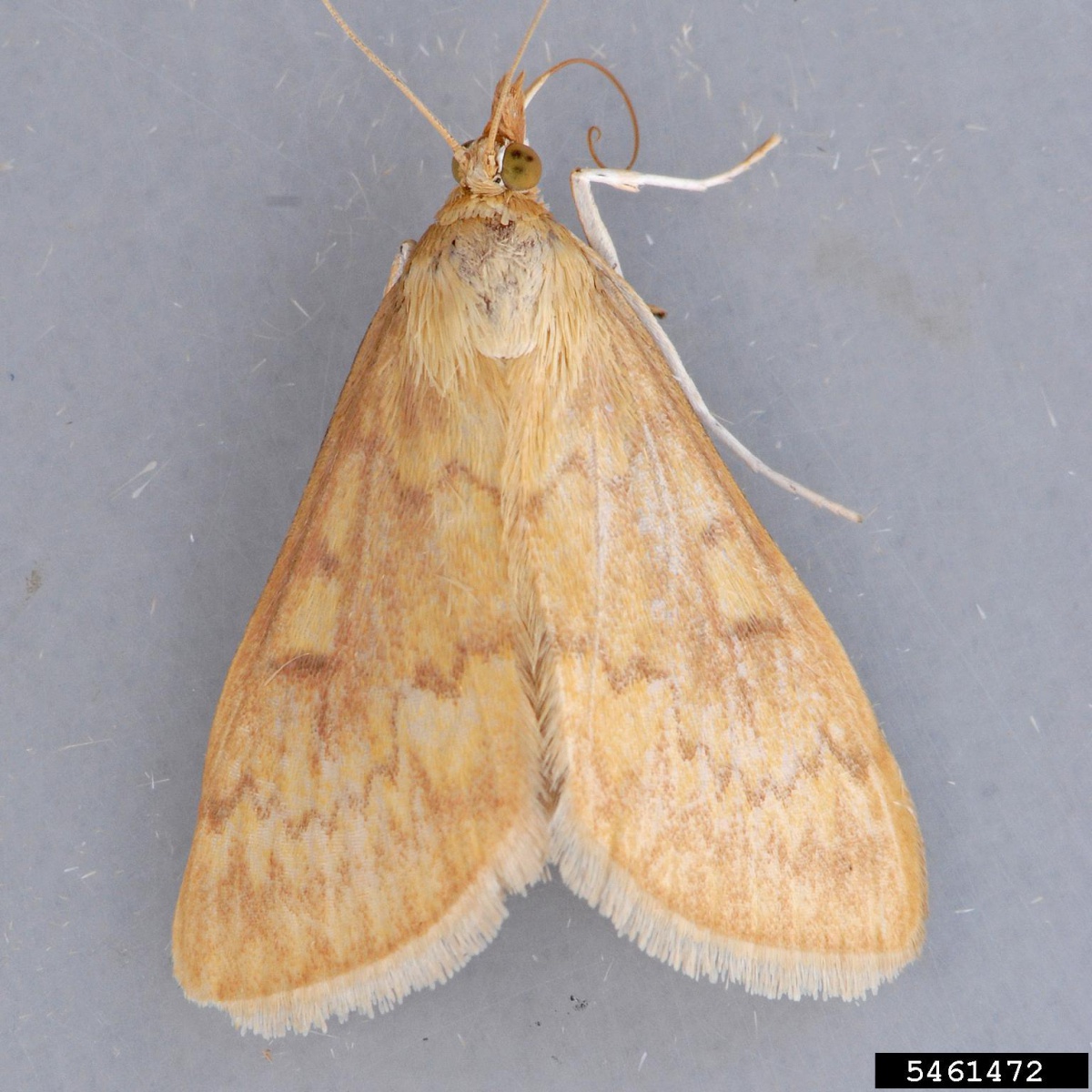
(Iowa State University; bottom), Bugwood.org.
Each female lays an average of 500-600 eggs. The eggs hatch into larvae in about a week, and the young larvae begin to feed on leaves, making small holes and leaving a sawdust-like frass. Larvae migrate into growing whorl of leaves where they eventually bore into the forming tassel. Infested tassels break when mature. As the larvae continue to grow, they eventually bore into stalks, usually at the internodes, and some find their way to the ears by boring through the side or the stem end of the ear. Heavily infested corn is easily lodged, making picking difficult. Some larvae move down the silk channel and attack ear tips. Mature larvae pupate in the cavities and some emerge as adult moths to start the second generation in August.
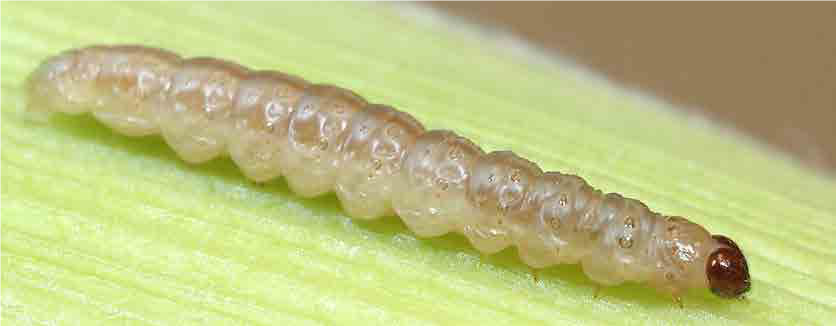
University), Bugwood.org.
Management
IPM Strategies:
- Monitoring - European corn borer flights can be monitored using net traps baited with pheromone lures. In whorl stage corn, the degree of infestation can be monitored by scouting for “shot holes”. Details of monitoring and management are found in Integrated Management of Sweet Corn Insects in New Hampshire (http:// extension.unh.edu/resources/files/Resource002124_Rep3135.pdf), which is on UNH Cooperative Extension’s website.
- Cultural Practices - Spunbonded row covers used while the corn is young can exclude the moths and eliminate the need for spraying. Plowing under corn refuse in the fall and early spring will help keep this pest in check. Keeping fields free of weeds will also reduce the pressure of European corn borer.
- Biological Control - There are a few natural enemies which prey on eggs and small larvae of European corn borer and can reduce the need for insecticide applications. In some situations, these (Trichogramma wasps for example) can be purchased and released, but may not be economically feasible. Biological insecticides based on Bacillus thuringiensis can be very effective controls, especially when applied down the whorl.
- Chemical Control - If pesticides are used, the two critical periods are (1) late whorl stage, when the tassels just become visible down inside the whorl and (2) fresh silk stage. In the late whorl stage, pesticides are aimed into the whorl, not elsewhere. During the fresh silk stage, pesticides are aimed at the silks.
- Genetic Control - Some genetically modified sweet corn varieties are available, that control European corn borer well. They may be most useful for fields located where spraying would be difficult. Genetically modified varieties are not allowed on organically certified farms.
Consult the New England Vegetable Management Guide or your county Agricultural Field Specialist for specific pesticide recommendations.
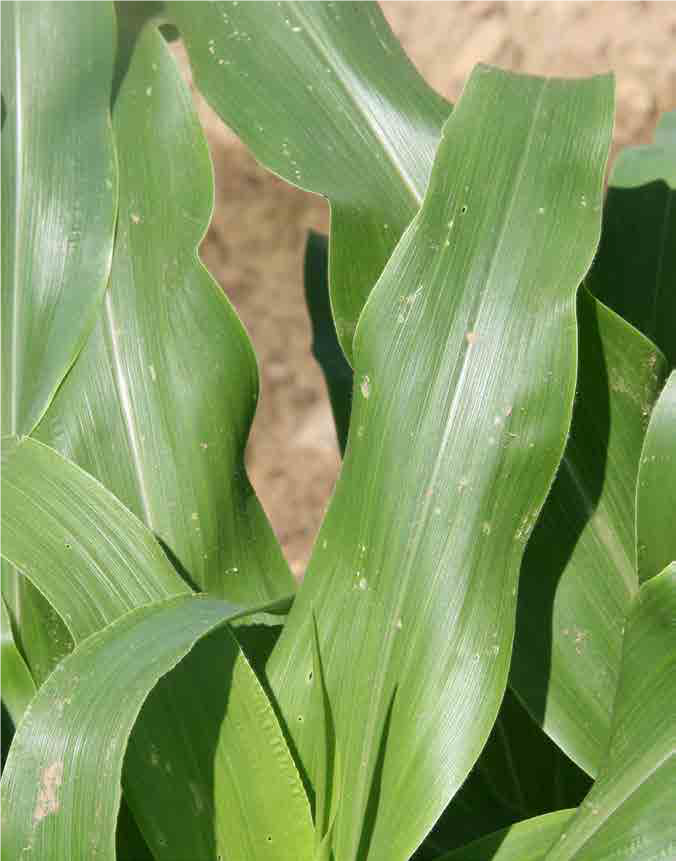
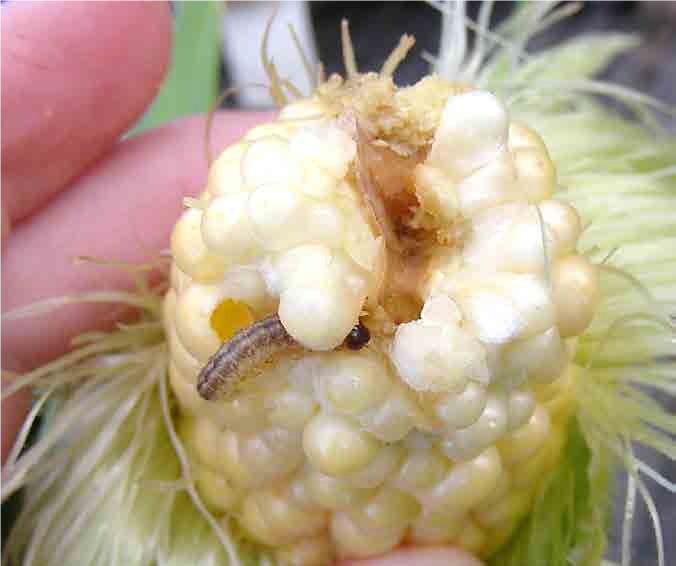
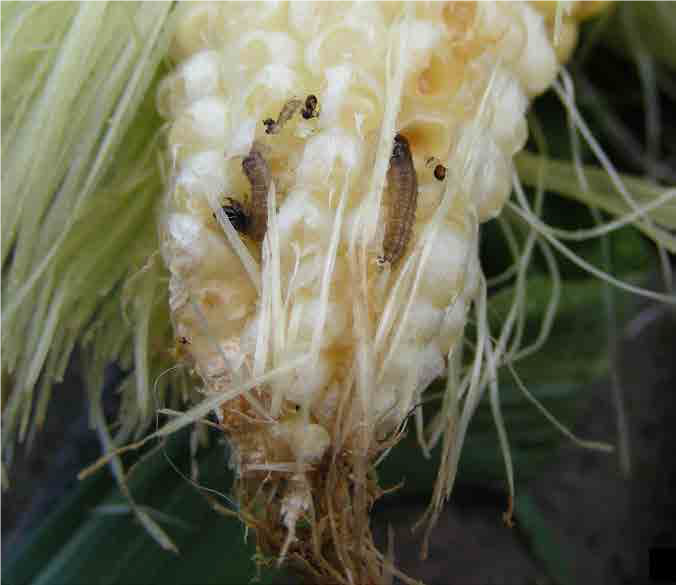
Bugwood.org.
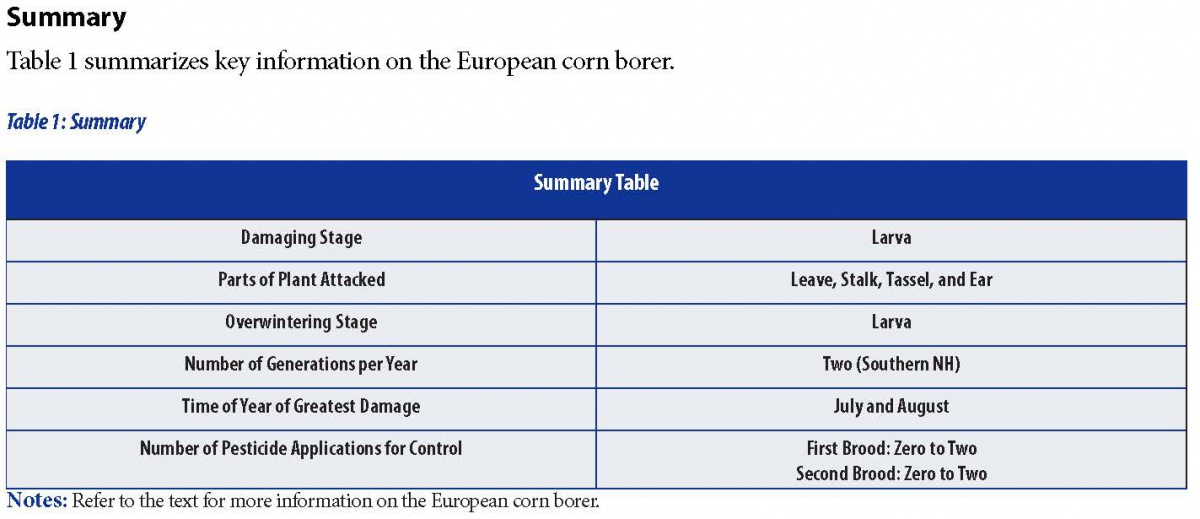
Stop! Read the label on every pesticide container each time before using the material. Pesticides must be applied only as directed on the label to be in compliance with the law. All pesticides listed in this publication are contingent upon continued registration. Contact the Division of Pesticide Control at (603) 271-3550 to check registration status. Dispose of empty containers safely, according to New Hampshire regulations.
Download the resource for the complete factsheet.

